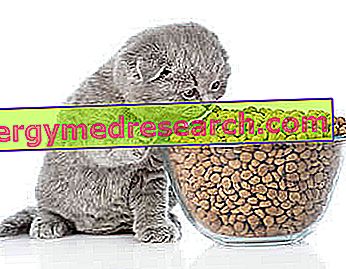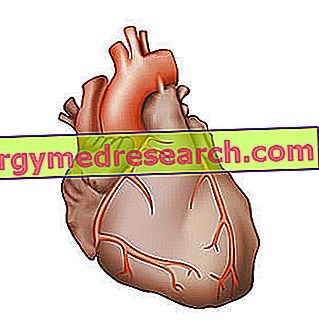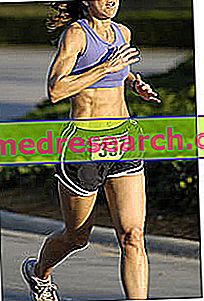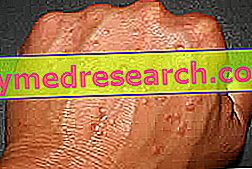Which Food Check?
Generally speaking, any wet food is better than dry food. This is because it has:
- Greater water content.
- A lower carbohydrate content.
- Higher animal protein content.

By favoring canned food compared to dry food, it is possible to prevent or cure most of the physical problems affecting cats.
In the advanced phase of research, it is very useful to resort to reading the food label.
It is a sort of "identity card" of the product that provides "almost" all the necessary information.
Label: What to watch?
When analyzing the nutritional table of cat food it is necessary to concentrate mainly on the columns concerning proteins and fats; unfortunately, carbohydrates are almost never mentioned.
In general, to determine whether the food is balanced or not, it is essential to check:
- Chemical composition.
- Ingredients used.
Chemical values
Pet food labels are NOT as accurate as those for human nutrition products, as they omit different information.
The rules governing the labeling of cat food enable companies to report chemical parameters in the form of "minimum" and "maximum" limits.
This "approximation" allows companies to modify the composition of the ingredients with greater elasticity. On the other hand, it prevents consumers from obtaining sufficiently accurate information.
Ingredients List
THE DILEMMA OF CARBOHYDRATES
Cat food labels do not mention the total amount of carbohydrates.
Since carbohydrates can damage the metabolism of these animals, it is important that the diet does not contain more than 10% (compared to the total energy).
Fortunately, the list of ingredients is shown on the label. Knowing the chemical properties of these products, it is possible to trace the possible presence of carbohydrates and their importance in the food in question.
If the list of ingredients includes cereals, potatoes, legumes, sauces and sauces *, the carbohydrate content could be very high.
In contrast, the glucose concentration should be less than 10% of total calories.
The research is aimed at excluding products that reach or exceed 50% of energy in carbohydrates.
On the other hand, the only way to avoid "carelessness" would be to contact the company for more detailed information.
SOYA AND PHYTO-EXTRAGENES
Soy is NOT a food that lends itself to the cat's diet. In addition to large amounts of carbohydrates, this legume contains phytoestrogens.
For humans, phytoestrogens play a tendentially positive role (antioxidant, lower cholesterol, etc.).
However, in the cat they negatively influence the metabolism of the thyroid gland.
Since domestic felines are very prone to hyperthyroidism, soy should be eliminated from their diet.
ALLERGIZING INGREDIENTS
Among the various components of cat food, some are potentially allergenic.
The foods that most frequently trigger allergy in cats are: seafood, beef, lamb, corn, wheat and soy.
If the allergic form is already known - or even for preventive purposes only (for example, in very small cats) - it is sufficient to consult the list of ingredients and exclude all those that contain the object of the adverse reaction.
PRODUCTS
The by-products are an extract / derivative of natural ingredients that mainly affects the wet food line.
On the label, they are presented with the names: "sottoprodotto", "pasto" or "fegato *".
For many it is a group of controversial foods of dubious origin.
The by-products are qualitatively better than dry food; on the other hand, they can show a nutritional profile far from that of muscle meat.

For example, the liver is a highly nutritious product but some argue that (in the long term) it can give rise to hypervitaminosis (especially of vitamin A and vitamin D).
ADDITIVES
Excessive additives can be harmful to both humans and cats.
In theory, the concentration of these molecules has safety margins imposed by the regulation for veterinary nutrition.
Obviously, the wording "food additive" does not reveal any chemical properties and the various molecules have quite different characteristics between them.
The compounds of greatest concern are: butylated hydroxyanisole (BHA), butylated hydroxytoluene (BHT) and ethoxyquin.
MISLEADING ADVERTISING
Valuable adjectives such as: "natural", "premium", "recommended by veterinarians", "prescribed diet" or "prescription" and "therapeutic" do not necessarily indicate a high quality level.
Most of the time, they do not have any scientific proof to support the beneficial characteristics mentioned on the label.
To avoid falling into this commercial "fishing", it is better to consult the label and make your own conclusions.
"Prescribed diet" is a term coined by the industrial sector and has no therapeutic and / or legal meaning; it is simply a marketing tool.
In other words, dietary foods for cats DO NOT contain any active pharmacological ingredient that can justify the veterinary prescription.
The commercial network of these products is somewhat questionable. They are placed by veterinarians who enjoy sales exclusivity. In return, companies rely on professional credibility while keeping prices high.



